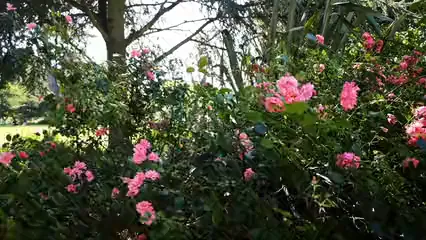

Comprehensive Guide to Plants That Start with C
Introduction
Plants that start with the letter “C” offer a stunning variety. From vibrant flowers to towering trees, each has unique features. This guide will cover flowers, shrubs, trees, and herbs, showcasing their beauty and uses. You’ll discover what makes each one special and how they can enhance your garden or landscape.Summary and Overview
Understanding plants that begin with “C” is valuable for gardeners, designers, and herbalists alike. This article highlights popular choices such as Carnation, Canna Lily, and Camellia. Each plant offers diverse uses, from ornamental beauty to medicinal properties. For gardening enthusiasts, these plants can add color and texture to landscapes. Landscape designers can use them to create stunning visual effects. Herbalists may find these plants beneficial for their healing properties. Whether you want to beautify your garden or explore their culinary uses, knowing these plants enhances your experience in the garden.To learn more about the beauty and care of carnation flowers, check out this comprehensive guide. Carnation
Types of Plants Starting with C
1. Common Flowers That Start with C
Flowers starting with “C” bring vibrant colors and delightful scents to any garden. Let’s look at some favorites. Carnation: Known for its ruffled petals, the carnation comes in many colors. Its spicy fragrance is often used in bouquets. These flowers bloom from spring to fall, thriving in sunny spots. Chrysanthemum: A staple in autumn gardens, chrysanthemums display a range of colors. They can be daisy-like or decorative in shape. These flowers prefer well-drained soil and full sun, blooming from late summer to fall. Canna Lily: With large, tropical-looking leaves, Canna Lilies produce stunning flowers. They are available in vibrant hues, perfect for adding drama to your garden. Plant them in rich, moist soil and provide full sun for best results. You can find high-quality Canna Lily Bulbs on Amazon that will make your garden pop! Coreopsis: Also known as tickseed, these cheerful flowers bloom in sunny yellow or gold. They are hardy and drought-tolerant, making them perfect for low-maintenance gardens. Coreopsis thrives in sunny areas and well-drained soil. Cosmos: These easy-to-grow annuals produce daisy-like flowers in bright colors. Cosmos attract pollinators like butterflies and bees, adding life to your garden. They prefer full sun and well-drained soil, blooming all summer long. You can get Cosmos Seeds to grow your own butterfly haven! Consider incorporating these flowers into your garden design. Their beauty and resilience will surely enhance any landscape!2. Ornamental Plants Starting with C
Ornamental plants add beauty and elegance to gardens. Two popular choices are Camellia and Clematis. These plants are well-loved for their striking flowers and lush foliage. Camellia is a stunning shrub known for its glossy leaves and beautiful blooms. Varieties include Camellia japonica and Camellia sasanqua, which showcase colors from white to deep red. They bloom in late winter to early spring, providing a bright spot in the garden during colder months. For those looking to add this beauty to their collection, check out the Camellia Plant available on Amazon. Clematis is another favorite. This climbing vine offers a spectacular display of flowers in various shapes and colors. Varieties like Clematis montana and Clematis viticella are particularly popular. They thrive on trellises, fences, and arbors, adding vertical interest to landscapes. Caring for these plants is essential for their health. For Camellia, plant in well-drained, acidic soil and provide partial shade. Water regularly, especially in dry spells. Prune after flowering to maintain shape and encourage new growth. Clematis requires full sun for vibrant blooms. Ensure the soil is rich and well-drained. Water deeply but infrequently to promote strong root systems. Mulching helps retain moisture and keep roots cool. Pruning varies by type, as some bloom on old wood while others bloom on new growth. Incorporating Camellia and Clematis into your garden can create a vibrant landscape. Their stunning flowers and lush foliage will undoubtedly enhance the beauty of your outdoor space.3. Edible Plants That Start with C
Edible plants not only beautify your garden but also enhance your meals. Let’s explore a few that start with “C”: Chives, Cabbage, and Calendula. Chives are a versatile culinary herb. Their mild onion flavor brightens salads, soups, and dishes. They thrive in sunny spots and well-drained soil. Why not start your own herb garden with Chives Seeds? Cabbage is a staple in many kitchens. Varieties like Green, Savoy, and Red cabbage offer different flavors and textures. They’re packed with vitamins and can be used in salads, stir-fries, or fermented as sauerkraut. Cabbage prefers cool weather and fertile soil, so plant in early spring or fall for the best results. Check out these Cabbage Seeds on Amazon to get started! Calendula, also known as pot marigold, is a beautiful edible flower. Its vibrant orange and yellow petals can be used in salads or as a garnish. Calendula has anti-inflammatory properties and is often used in herbal remedies. Plant it in full sun, and it will bloom throughout the growing season. Growing these plants in your kitchen garden adds beauty and flavor. Imagine snipping fresh chives for your morning omelette or crafting a colorful salad with cabbage and calendula petals. Start your edible garden today for a mix of beauty and utility!4. Medicinal Plants Starting with C
When it comes to natural healing, several plants starting with “C” are notable. Let’s look at Comfrey, Calendula, and Catnip. Each of these plants offers unique health benefits and traditional uses. Comfrey is often used for its healing properties. This herb can promote the healing of wounds and reduce inflammation. It contains allantoin, which encourages cell regeneration. Many people use it topically for bruises or sprains. However, it’s important to use it cautiously, as it can be toxic if ingested in large amounts. You can find Comfrey Plants for your garden on Amazon. Calendula, or pot marigold, is known for its bright orange flowers. This plant has antifungal and antibacterial properties. People often use Calendula for skin irritations, like cuts or rashes. You can apply it as an oil infusion or cream for soothing effects. Additionally, its vibrant petals can be added to salads for a splash of color. Catnip isn’t just for cats! This herb has calming effects for humans, too. Traditionally, it’s used to alleviate anxiety and improve sleep. Drinking catnip tea can help soothe headaches and digestive issues. Plus, it’s easy to grow in your garden. You can get Catnip Seeds to enjoy this herb’s benefits. Preparing these plants for medicinal use is quite simple. Comfrey can be made into a salve or poultice by crushing the leaves and mixing them with a carrier oil. Calendula can be infused into oils or made into herbal teas. Catnip is best enjoyed as a tea. Just steep the dried leaves in hot water for 5-10 minutes. Consider adding these plants to your herbal medicine cabinet. They offer a natural approach to health and wellness, providing both beauty and utility in your garden.
5. Trees That Start with C
Trees add beauty and function to landscapes. Let’s discuss Cedar, Cherry, and Crape Myrtle, which are excellent choices for various uses. Cedar trees are known for their durability and aromatic wood. They provide excellent shade and are often used in landscaping. Their tall, evergreen presence can enhance any garden space. Cedars prefer well-drained soil and full sun, making them easy to maintain. You can find Cedar Tree Saplings on Amazon to start your own mini forest! Cherry trees, with their stunning spring blooms, are a favorite among gardeners. The delicate pink or white flowers attract pollinators, adding life to your garden. In addition to their beauty, cherries produce delicious fruit. They thrive in sunny areas and can adapt to various soil types, making them versatile. Check out these Cherry Tree Saplings available on Amazon! Crape Myrtle is a popular ornamental tree. Its vibrant summer blooms in shades of pink, red, and white create a stunning display. Crape Myrtle is also drought-tolerant, making it ideal for warmer climates. It prefers full sun and well-drained soil, making care straightforward. Providing the right conditions is crucial for these trees. Cedars thrive best in full sun and well-drained soil. Cherry trees also prefer full sun, while Crape Myrtle flourishes in warm, sunny spots. Proper watering and pruning will ensure healthy growth. Consider planting these trees in your yard. They not only enhance beauty but also provide shade and ecological benefits. Plus, they can create a stunning visual impact in any landscape.
6. Shrubs and Bushes Starting with C
When it comes to landscaping, shrubs play a vital role. They provide structure, color, and texture to gardens. Two excellent choices are Cotoneaster and Cornus. Cotoneaster is a versatile shrub known for its dense foliage. It features small, glossy leaves and produces bright red berries. Varieties like Cotoneaster dammeri are low-growing and perfect for ground cover. Others, like Cotoneaster horizontalis, have a more upright form, making them ideal for borders. You can find Cotoneaster Shrubs on Amazon for your garden. Cornus, commonly known as dogwood, is another fantastic option. It boasts beautiful flowers in spring and vibrant foliage in autumn. The Cornus alba, or red-twigged dogwood, has striking red stems that stand out in winter. Meanwhile, Cornus sericea offers creamy-white flowers followed by white berries, attracting birds. These shrubs are perfect for various landscape designs. Use Cotoneaster as a low hedge or ground cover to create a lush carpet of greenery. Cornus can be planted as focal points in mixed borders, drawing attention throughout the year. Their vibrant colors and textures enhance any garden space. Consider incorporating these shrubs into your garden for hedges or borders. They not only provide beauty but also attract wildlife, making your garden a vibrant ecosystem.
7. Unique and Rare Plants That Start with C
If you’re looking to add something special to your collection, consider unique and rare plants like Ceropegia and Cryptanthus. Ceropegia, known as the “string of hearts,” is a fascinating succulent. It features long, thin stems adorned with heart-shaped leaves. Growing Ceropegia is easy; it thrives in bright, indirect light and requires minimal watering. This plant is a great choice for hanging pots, adding a whimsical touch to your home. Cryptanthus, or Earth Star, is another stunning addition. This bromeliad has rosettes of colorful leaves, often in shades of green, pink, or red. Cryptanthus prefers bright, filtered light and needs regular watering to keep the soil slightly moist. Its unique shape and color make it a conversation starter in any plant collection. You can check out Cryptanthus on Amazon. Adding these rare plants to your collection can spark interest and admiration. Their unusual forms and colors will surely enhance your indoor or outdoor space. Explore local nurseries or specialty shops to find these hidden gems.
8. Tips for Growing Plants That Start with C
Ensuring your plants thrive is key to a beautiful garden. Here are some tips specifically for those plants beginning with “C.” General Care: Many of these plants prefer full sunlight. Watering regularly is essential, but avoid overwatering. Check the soil moisture before watering. Most “C” plants benefit from regular pruning to promote bushier growth and more blooms. Fertilizing during the growing season can also boost their health. For a great fertilizer option, consider Plant Food Fertilizer available on Amazon. Soil Requirements: Well-drained soil is crucial. Many plants starting with “C,” like Camellia and Calendula, thrive in slightly acidic to neutral soils. Use organic matter to enrich the soil, improving drainage and nutrient content. Consider a soil mix that retains moisture without becoming soggy. Common Pests and Diseases: Watch out for pests like aphids and spider mites. These can be particularly troublesome for plants like Canna Lilies and Cosmos. Use insecticidal soap or neem oil spray for management. Fungal diseases, such as powdery mildew, can affect plants like Coreopsis. Ensure good air circulation and avoid overhead watering to minimize these risks. To make your gardening journey easier, keep a gardening journal. Tracking your plants’ growth, watering schedules, and any pest issues can help you become a better gardener. You’ll learn what works best for your unique environment, making your green thumb even greener!
Conclusion
Plants starting with “C” add incredible variety to your garden. From vibrant flowers to useful herbs, these plants enhance your space with beauty and utility. They serve essential roles in culinary and medicinal practices, making them valuable additions. Explore and cultivate these plants to enjoy their stunning aesthetics and benefits for years to come. Happy gardening!Please let us know what you think about our content by leaving a comment down below!
Thank you for reading till here 🙂
All images from Pexels



